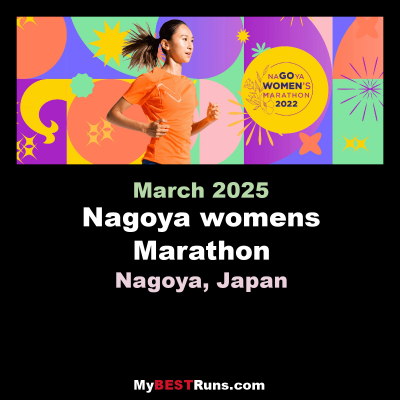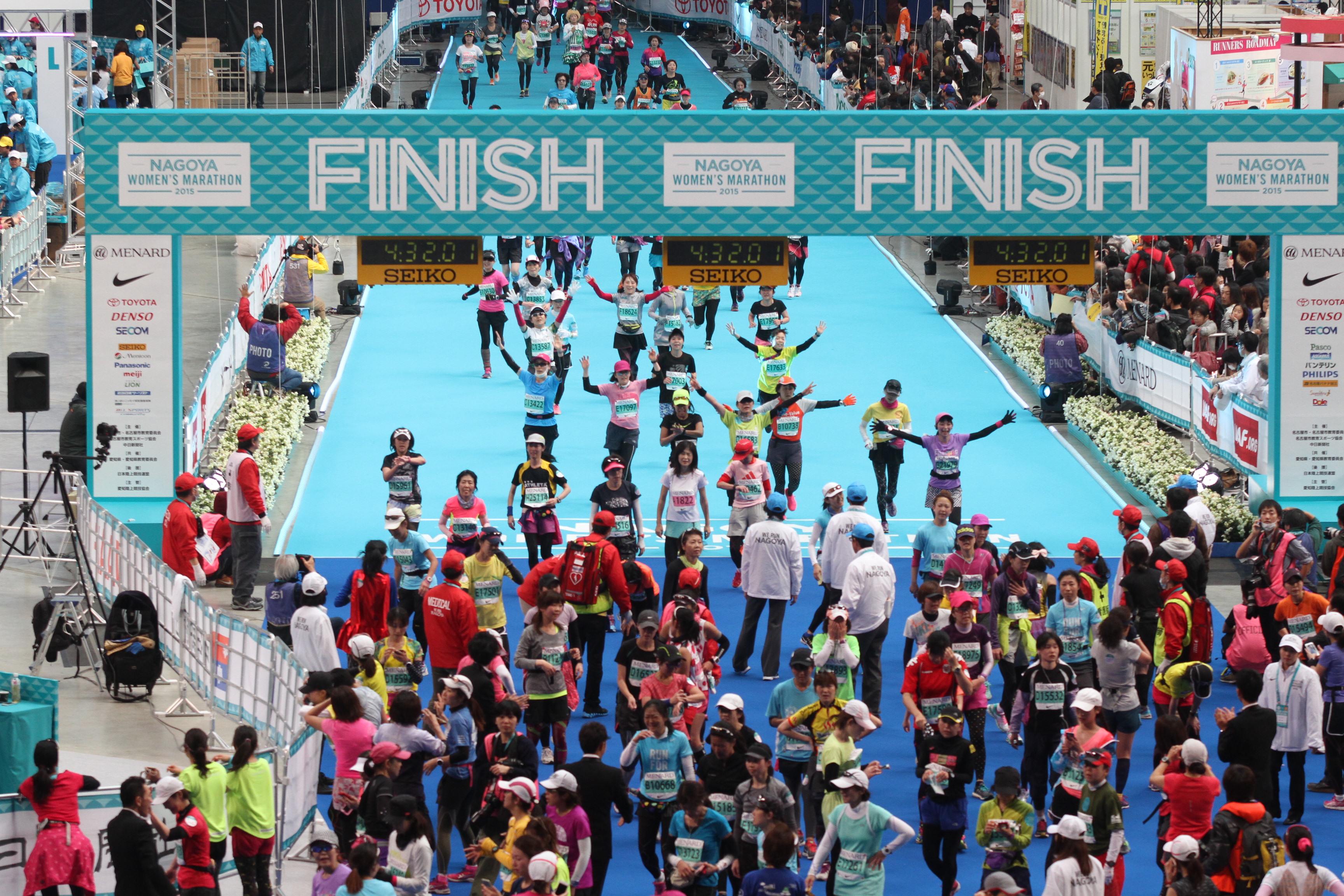Sunday March 9th, 2025
Nagoya, Japan
Distance: Marathon
Offical Race Web Site
The Nagoya Women's Marathon named Nagoya International Women's Marathon until the 2010 race, is an annual marathon race for female runners over the classic distance of 42 km and 195 metres, held in Nagoya, Japan in early March every year. It holds IAAF Gold Label road race status.
It began in 1980 as an annual 20-kilometre road race held in Toyohashi, Aichi, Japan. After its first two years there, the venue changed to Nagoya for the third edition in 1982. It was converted to a marathon race for the 1984 edition, and a 10-kilometre race was also added to the race programme. The race acts as the Japanese women's marathon championships on three-year rotational basis. Performances at the race are typically taken into consideration when deciding the Japanese women's Olympic or World Championship teams. Nagoya has also twice hosted the women's Asian Marathon Championship race (1988 and 1994).

| Division | Time | Name | Age | Home |
| Female | 2:21:19 | Yuka Ando | jpn | |
| 2nd Female | 2:21:26 | Eunice Chumba | bhrn | |
| 3rd Female | 2:21:33 | Ayuko Suzuki | jpn | |
| 4th Female | 2:22:11 | Rika Kaseda | jpn |
| Division | Time | Name | Age | Home |

Ruth Chepngetich won $250,000 when she won the 2022 Nagoya Women’s Marathon
Kenya's Ruth Chepngetich won the Nagoya Women's Marathon in a new race-record time on Sunday, finishing ahead of Israel's Lonah Chemtai Salpeter and Japan's Yuka Ando in second and third, respectively.
The winner of the 2022 race received $250,000, currently the highest first-place prize money for a marathon in the world, according to organizers. In addition to elite competitors, it also admitted general-entry runners residing in Japan.
Chepngetich, the 2019 world marathon champion and 2021 Chicago Marathon winner, crossed the line at Vantelin Dome Nagoya in 2 hours, 17 minutes, 18 seconds, more than a minute ahead of Salpeter, winner of the 2020 Tokyo Marathon. Ando clocked 2:22:22.
Ando, who competed in the 10,000 meters event at the Tokyo Olympics last summer, met the qualifying time of sub-2:23:18 to be granted entry into the world athletics championships to be held in Oregon in July.
The race became a two-woman battle between Chepngetich and Salpeter after the 30-kilometer mark, but Chepngetich made a decisive uphill surge with around 8 km remaining, running strongly all the way to the finish line.
---
Finishing gate is not the final goal of Nagoya Women’s Marathon. After runner passes through the clock gate, there waits another goal gate colored in Tiffany blue. One by one, men in tuxedo hands out Tiffany’s blue box at the gate, big climax assures your smile.
The Nagoya Women’s Marathon was originated as the Nagoya International Women’s Marathon, an elite race known as a qualifying trial for the Olympics and the World Championships. To respond to the expectation of marathon fans across the country, the race was reformed into a mass marathon event with participants of 15,000 women in 2012. Starting and finishing at Nagoya Dome, the route is designed to showcase many focal points of the city. The course is also popular for being wide and mostly flat, which makes it easy to run and break records. While the race still serves as a world-leading competition among elite athletes, its time limit is set to be 7 hours long, so that even beginners can easily complete it! (The completion rate of 2018: 96.5%)
The International Association of Athletics Federations (IAAF) rates road races in the world and awards a designation of which the highest is Gold Label. The Nagoya Women's Marathon has been held as an IAAF Gold Label race since 2013. Other major races that hold the same Label are such as the New York City Marathon, the Boston Marathon, the Chicago Marathon (the US), the London Marathon (the UK), the Berlin Marathon (Germany) and the Tokyo Marathon (Japan).
With 13,114 participants, the first Nagoya Women’s Marathon in 2012 was recognized as the largest women’s marathon in the world by Guinness World Records. In 2018, the marathon again improved its own record to 21,915 women participants!









